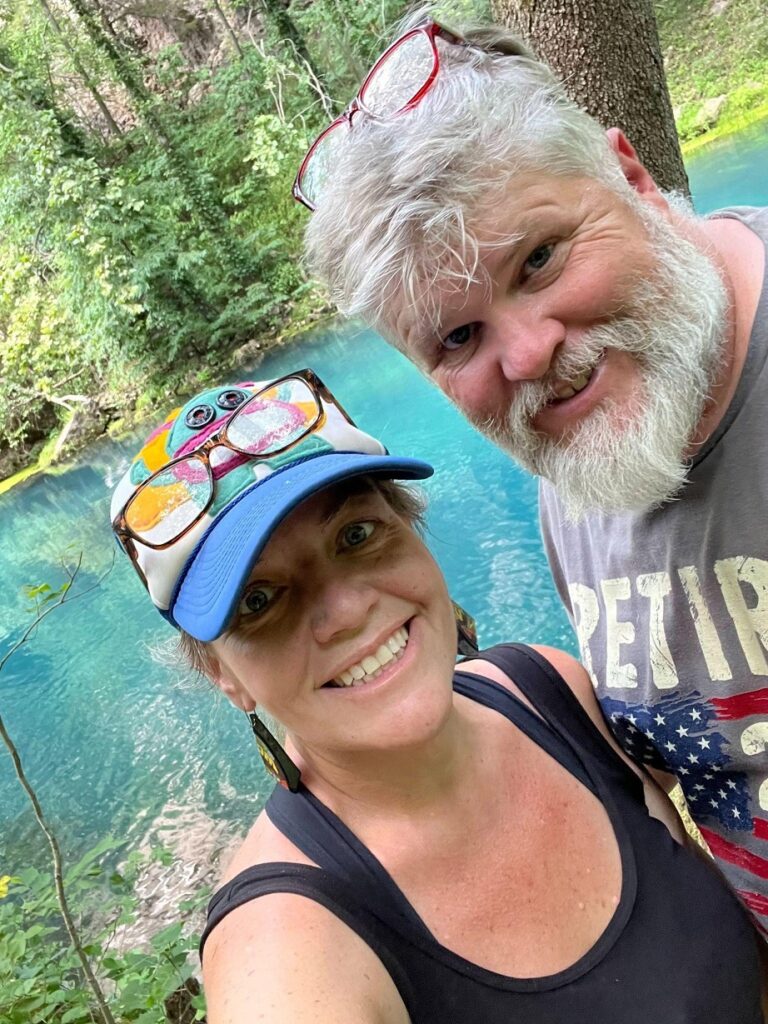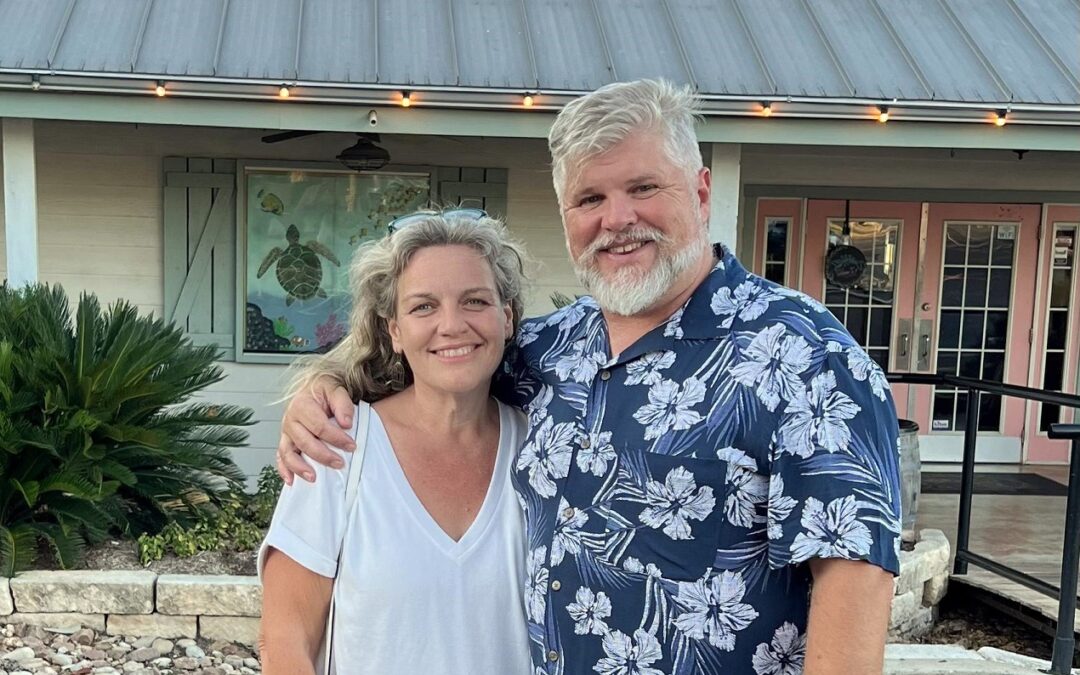By Anna Larson
Guest Blogger &
SpouseLink Ambassador
Every morning, my Veteran and I sit on our front porch with a cup of coffee in hand. This is a new routine we’ve adopted since he retired. We like to spend 10-15 minutes talking about our upcoming day and it’s been a great way to reconnect. Today, as I sipped my coffee and listened, my mind wandered back 20 years ago to one of our first duty stations in Germany.
It was the anger that I noticed in him at first. I don’t even know if anger is the right word, but I could see a slow burning frustration that wasn’t there before he’d deployed. I didn’t understand what it was or even how to properly describe it. It wasn’t bad enough for me to feel overly worried. It was just something new that we had to learn to deal with.
A week earlier when my servicemember had returned from a deployment, our two-year-old daughter stood waiting in her princess footie pajamas holding her favorite stuffed animal and the welcome-home sign. I dressed up and put on makeup despite it being 11:30 PM and well past our normal bedtime. The makeup and clothes made me stand out as a newer military spouse next to the seasoned group who’d done this many times before. I anxiously watched for him among the sea of patterned camo uniforms. It was our first deployment as a married couple and I thought we had weathered it well.
He’d deployed before, but never with a wife and child waiting for him at home. We’d talked on the phone once every couple of weeks when he had time to call from the pay phones on the FOB and once or twice I’d get a call from the satellite phone when he was out in the field — a wonderful unexpected surprise. We also wrote emails and letters with care packages attached. I’d done all the things I knew to do from reading MilSpouse 101 blogs and talking with friends.

When I noticed the anger, I was confused at first. “What was I doing wrong?” “How could I better support him?” “What did he need that I wasn’t giving him?” He was surprised when I asked him about it. “Nothing is wrong,” he’d say. “I’m not angry. It’s fine.”
We did what we thought was normal. We chalked up the differences and changes to what every military family has to do when adjusting from a deployment. We didn’t talk about it. We didn’t dwell on it. We just adapted and created a new normal. A new normal for our marriage. A new normal for his role as a daddy. A new normal in his exercise routine. A new normal for work. A new normal for hanging out with friends.
The shifts from the old way to the new way didn’t seem jarring at the time. Now, looking back I see it so much more clearly. The early signs of trauma. The early signs of anxiety and depression. The early signs of PTSD.
As a military spouse, you might recognize my story. Perhaps you’ve experienced those shifts in behavior that force your family to create new norms. It’s possible you’ve brushed it away as not being a big deal. There are so many other things to deal with. So much more that takes our time and energy. You might have told yourself that it’s not that big of a deal.
Twenty years later and many deployments more, it took retirement, a lot of research, conversations, counseling, and more for me to be able to recognize all the complicated pieces that played a part in the emotional and behavioral changes we experienced from that first deployment through his over 20-year career. While it wasn’t clear to me those first few weeks in Germany, it’s so clear to me now. My servicemember has PTSD.
The Deadly Gap
The “deadly gap” is the timeframe from when a servicemember transitions out of active duty military service and into civilian life. Approximately 200,000 servicemembers transition or retire from active duty service each year. This timeframe is one of the most critical for servicemembers and their families, with research showing suicide rates increasing by 3x the norm in the first few months following the transition. PTSD, anxiety, and depression make them even more vulnerable.
My family is bridging that deadly gap right now. Here are a few thoughts I want to pass on to transitioning military spouses to help you be more prepared.
Know the Signs
There is no perfect checklist for PTSD. The way my servicemember experiences symptoms will not be the same as your servicemember. Make sure you are aware of the distress signals that are unique to your servicemember.
The Process of Getting Their VA Rating Can Bring Up Bad Memories
One of the most surprising consequences of my servicemember meeting with doctors to evaluate his medical claims for the VA was having to talk about experiences and situations he had tucked away and compartmentalized in the back of his mind for many years. Neither of us was prepared for it and the cause and effect were very similar to what we experienced after that first deployment.
Talk About It
You can choose professional counseling or a really good friend, but please find someone who can be a listening ear. There are a lot of organizations that offer time to retired or transitioned military families, such as Give an Hour. Even if your servicemember isn’t ready to talk about what they’re experiencing, it’s important for family members to find support and a place to share their struggles and frustrations. If you aren’t ready to talk, then participate in groups where you can listen. Organizations like The Veteran Spouse Network offer virtual conversations and safe spaces to learn more about all kinds of transition topics.

Find Your Community
The ETS Sponsorship Program is a new public/private partnership with the Veteran’s Administration that provides early support to transitioning and retiring servicemembers and their families. Servicemembers register one year in advance of their transition and the program partners them with a sponsor that can give them specific information on the things most important to the transitioning military family (schools, housing, employment, etc.) You can register as a participant or become a sponsor for another military family going through transition. Learn more about the ETS Sponsorship Program from this SpouseLink live stream:
As your military family transitions, I hope you find healing from those old wounds and the support you need to thrive.
If you or someone you know is in crisis, please call 988 to reach the National Suicide Prevention Lifeline. Or call 1-800-273-TALK (8255), or text the Crisis Text Line (text HELLO to 741741). All services are free and available 24 hours a day, seven days a week. All calls are confidential.

About Anna Larson
Anna is a copywriter and digital marketing strategist, and owner of NomadAbout, a digital marketing strategies company that helps entrepreneurs and other business owners showcase their organizations through social media, websites, and marketing campaigns what they are passionate about and how they do it better than anyone else. She is active in the military community, co-hosting a weekly business-oriented livestream and co-leading the Fort Cavazos (formerly Fort Hood) Cha Chapter of the Association of Military Spouse Entrepreneurs.
Europe, Africa, and the United States, her family made the leap into military retirement. Anna is also a SpouseLink Ambassador with two kids and two dogs. She’s a long-time homeschool mom that loves dance parties, popcorn, camping, and snorkeling in the ocean. In her spare time, you’ll find her traveling the world with her family, relaxing around a fire pit, or on a long walk with her pups.



